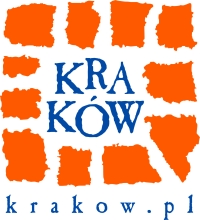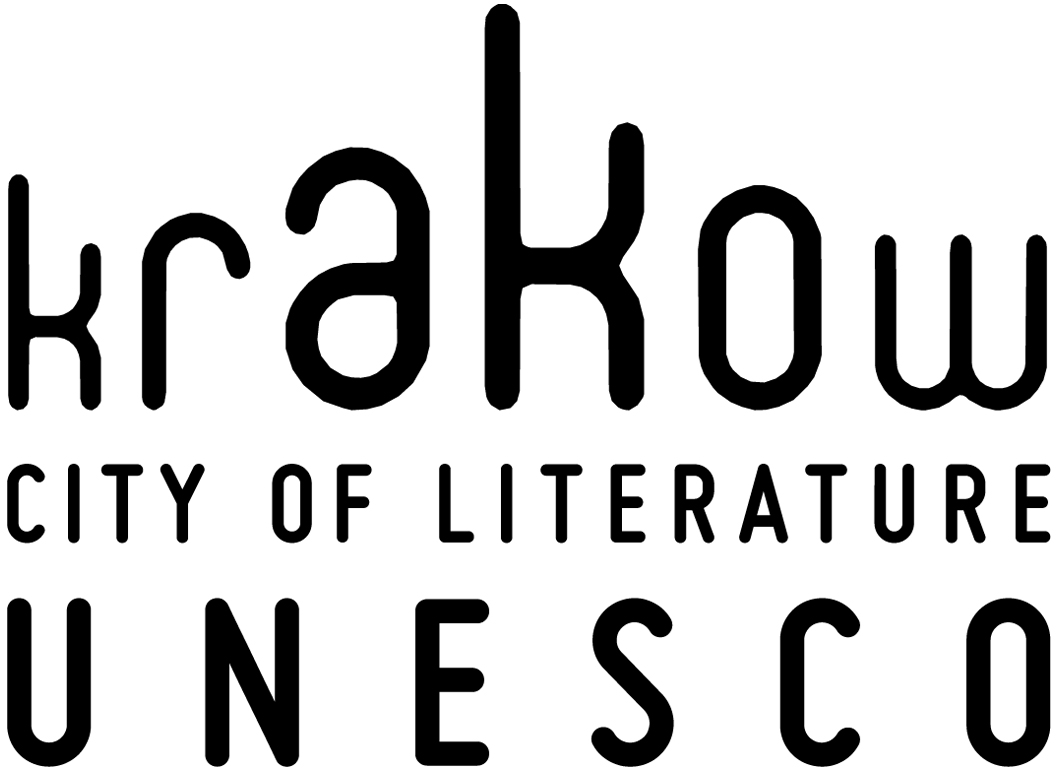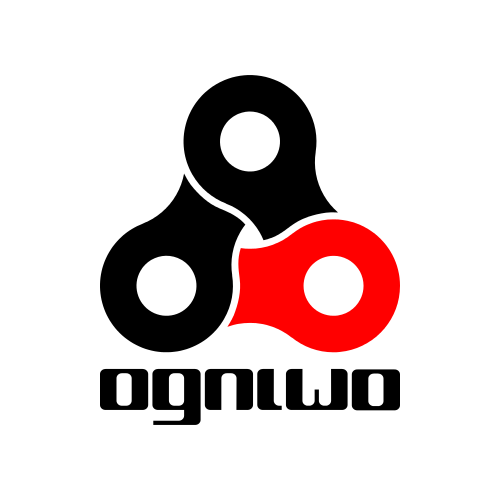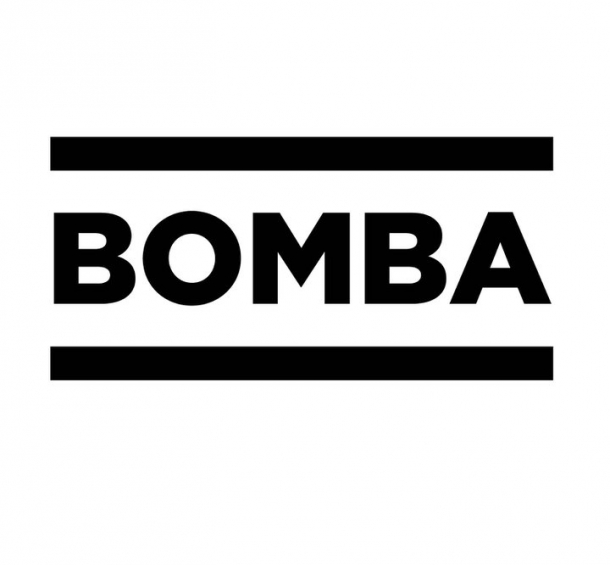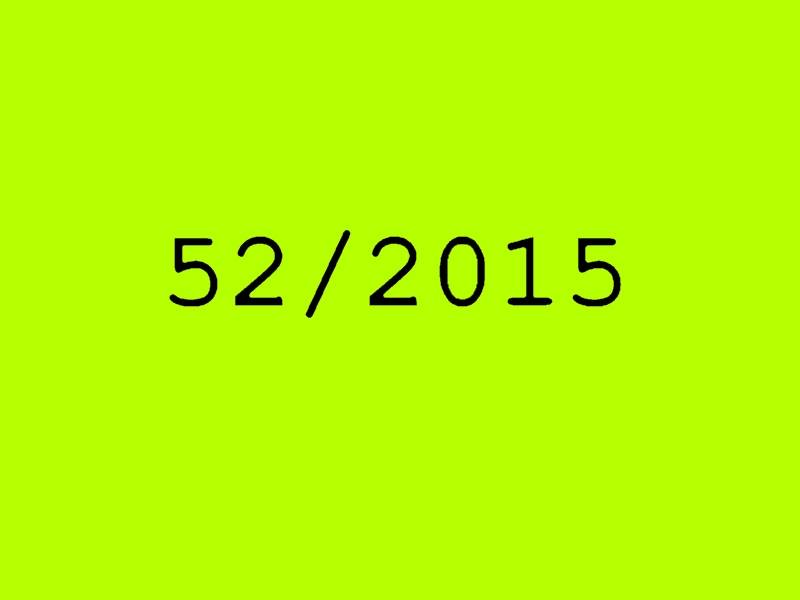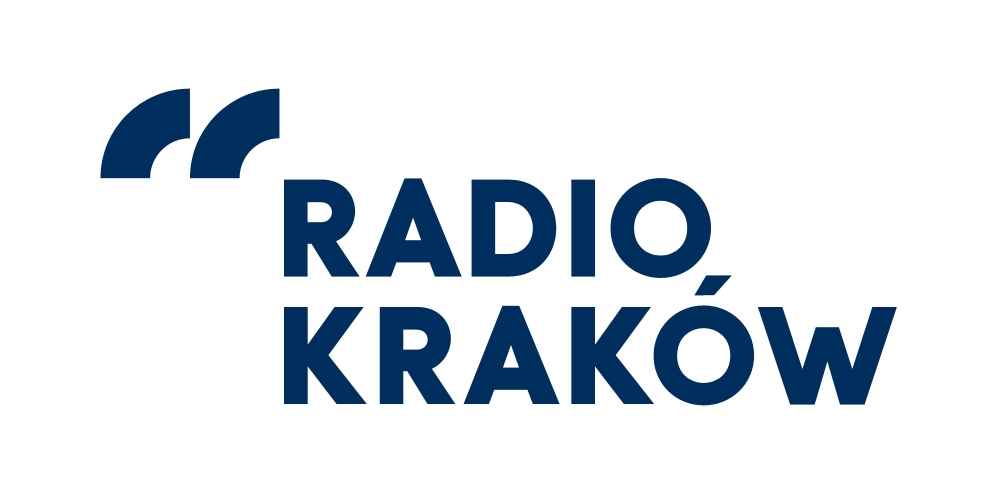The Ha!wangarda International Literary Festival 2015
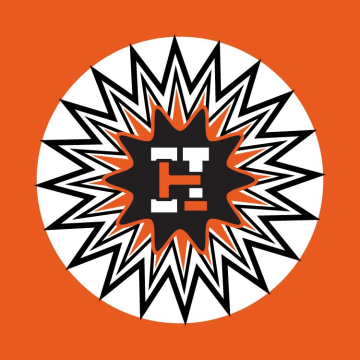 The Ha!wangarda Festival is geared towards promotion and presentation of avant-garde, experimental trends in global and Polish literature. Digital art presentations introducing the most significant works of electronic literature, generative literature workshops, exhibitions of video games based on literature and meetings with authors are the main features of the festival. It presents the diverse genres of digital literature, original approaches towards the book as a medium, and visual literature; it prioritizes writers who have freshly emerged onto the literary scene. On one hand, it maps current trends in experimental writing, and on the other it explores the question of the future of literature in the digital world.
The Ha!wangarda Festival is geared towards promotion and presentation of avant-garde, experimental trends in global and Polish literature. Digital art presentations introducing the most significant works of electronic literature, generative literature workshops, exhibitions of video games based on literature and meetings with authors are the main features of the festival. It presents the diverse genres of digital literature, original approaches towards the book as a medium, and visual literature; it prioritizes writers who have freshly emerged onto the literary scene. On one hand, it maps current trends in experimental writing, and on the other it explores the question of the future of literature in the digital world.
• • •
Follow Ha!wangarda on facebook
POLSKA WERSJA DOSTĘPNA TUTAJ
L I N E U P
Thursday, October 1st
HIPERMEDIAL ARTEDACT FROM BRATISLAVA & PRAGUE
Bunkier Sztuki, AV room, Plac Szczepański 3a
14.00–15.15
Peter Sýkora: Cybertextual “Book of Life“ and Biomedia
The aim of my contribution is to show that the “The Book of Life”(biological texts written in DNA code) is more then just a popular-science metaphor. However, “The Book of Life” is not a biological parallel to printed books, but rather to a cybertexts in the sense of Aarseth's original definition of ergodic literature. The digital nature of biological cybertexts in living cells allows various forms of new media remediations in living entities (biomedia), of which genetic poetry is an excellent example.
Kristof Anetta: Age of Contingency: Digital Reading as a Philosophical Experience
In this contribution, I will link the cognitive-perceptual differences between experiencing analog and digital art to a particular tendency in 20th century philosophy, documented by Richard Rorty in Contingency, Irony, and Solidarity (1989). I will argue that the key psychological moment in the transition to digital literature is when the reader stops believing that she is looking at a “strong”, authoritative version, when she starts feeling that she cannot submit her actions to the totality of the author’s control. In digital literature, as opposed to seeing the one and only correct version, characteristic of traditional literature, readers are required to accept the contingency of, among others, randomization and movement, and even produce contingency by making uninformed decisions. Such contingency, being a metaphor of mankind’s inquiry for understanding, produces a meta-experience of having to be content with devoting the moment to a product shaped by decisions and chance
Jana Tomašovičová: Topológia hypertextov / Die Topologie der Hypertexte
Hypertext crosses a number of borders. It is located in the intermedial space, where individual media discourses are tightly interwowen and refer to each other. At the same time, its structuredness transcends the single-dimension flow. Hypertext is not structured from a solid external standpoint; it develops from its own center. Thus, it acquires the features of a chiasmatic connection, a densely layered multidimensional network. The aim of this contribution is to observe the structuring of hypertext and name the key aspects that distinguish it from the traditional construction of texts in print.
15.30–16.45
Bogumiła Suwara: Different Slavic Studies?
The founders of Slavic studies were active during a period when philosophy and theology were starting to separate, thus bringing to life many disciplines of the humanities and social sciences. Therefore, based on a variety of hypotheses, Slavic studies were, in a similar way as other disciplines of the humanities, incorporated into the process of reflecting on the symbolical production of Slavic languages (literatures/cultures). Theorizing about “different” Slavic studies will relate to symbolical production (manipulation) determined by the functioning of social networks, democratization of access to (and analyses of) big data, and will build on the concepts of “collective intelligence” and its implications for the new foundations of Slavic studies (as collective intelligence created by Slavic languages' users).
Karel Piorecký: Text messages as a subject and medium for recording literary text
The development of digital communication technologies at the end of the twentieth century not only significantly altered ordinary interpersonal communication, but also brought about changes in literary communication. In addition to the Internet, mobile telephone technology also entered into fairly strong interaction with literary culture, particularly its writing function and short text messages. The author focuses on analysing the ways in which Czech literary culture has entered into interaction with text messaging technology and how this text type has been involved in the transformation of some epistolary genres (the epistolary novel and diary), in the transformation of the creative writing process itself and the way in which texts are distributed. The genre range of the literary texts analysed is broad, including prose and poetry, works that have literary ambitions and amateur writing, as well as what could be called popular literature. Research into Bohemical material will be grounded in broader supranational, diachronic contexts.
Kateřina Piorecká: Nezval’s Pantomima between genres and media
In September 1924 Nezval published his second book, considered to be his first poetist collection. The texts included in the Pantomima collection were highly varied: a photogenic poem inspired by Delluc along with a mime show script, essays, vaudeville and typographic or picture poems. The blank space on the page outside Nezval’s texts is filled by quotes from the authors supported by Devětsil (Rimbaud, Apollinaire, Cocteau, Tzara, Epstein, Mallarmé and Baudelaire), but an anonymous anecdote also appeared there too. Other authors were also involved in the book: the foreword was written by Jindřich Honzl, the editor was František Götz, the author of the picture poem on the cover was Jindřich Štyrský, the typography and visual lay-out of the other typographical and picture poems were designed by Karel Teige. At the same time instead of illustrations the book was interleaved with reproductions of works by Jindřich Štyrský and Marie Laurenciová, while the enchantment of the exotic was highlighted by photographs of African sculptures and Indian miniatures, and New York cinema neon lights suggested adoration of the vibrant modern city. With its photos of the Fratellini brothers from the Merdano Circus in Paris and dancer and film star Alla Nazimová the book professed its admiration for contemporary popular culture. However, as the title Pantomima itself suggests, the medium is not just text, but it also had its on-stage form as a recitation sequence, on the basis of which two pieces of music were composed by Jiří Svoboda and Iša Krejčí, while the Abeceda cycle was created by Milča Mayerová as a dance composition. Two years later the cycle based on this came out independently with photographs of the dancer and artistic design by Karel Teige. The book was both a gesture by the author and at the same time a collective implementation of the points formulated in poetist manifestos. Moreover, in Vítězslav Nezval’s personal papers the author discovered some unknown verses from the Zvuk slunečních hodin (Sound of the Sundial) cycle, which Nezval conceived as lettrist poetry. What was the approach towards the traditional book form during the 1920s? In what way did the new media influence Czech avant-garde thinking? In what ways did film, photography, sound recording and the typewriter affect the development of Czech inter-war poetry?
Marek Debnár: “Central Europe” – in literature of the Visegrad region and the Slovak National Corpus
The paper explores the problem of different ways of understanding of the term “Central Europe”, which can be found in essays and literary works from the Visegrad region. Due to the fact that the idea can be expressed solely by meanings of language in the same way as philosophical truths or literary experiences, the act of meaning creation in this field is subject to the process of linguistic signification. Therefore, we consider the subcorpus of essays and literary works from the Slovak National Corpus. The paper outlines ways of interpreting the statistical results of the quantitative occurrence of selected word forms connected with Central Europe and also defines the possibilities of using the subcorpus not only for linguistic and literary purposes, but also in interdisciplinary research areas.
MEDIA ART SHOW
Bunkier Sztuki, AV room, Plac Szczepański 3a
19.00–19.25 – I : * ttter – Installation & performance by Zuzanna Husarova & Ľubomír Panák
I : * ttter is a multimedia artistic project based on the Kinect 3D sensor. This interactive installation/performance utilizes the “remake principle” in two ways: on a textual level – interacting with leading works of international Net.Art and on a sonic level – in relation to the fundamentals of the theremin. Thanks to the sensors, we can – with our to hand’s movement – easily browse, erase or mix dialogues that resemble (online) communication of persons/machines. The text on the projection screen is remixed from selected textual fragments of European Net.Art (My Boyfriend Came Back From the War by Olia Lialina, This Morning and IBM by Alexei Shulgin, zkp3.21 by Vuk Cosic, 100cc and g33con by the art collective JODI, Irational by Heath Bunting, City by Markéta Baňková, four.Values by Perfokarta, Falling Times by Michal Bielický, Koniec swiata wg Emeryka by Radoslaw Nowakowski and AE by Robert Szczerbowski). Through a virtual aerial, we will also control the oscillator pitch and thanks to the possibility to activate a drawing mode, we can “enter” the individual pieces with our own drawings. The piece was exhibited at the exhibitions: Words Unstable on the Table London, New Poetry Forms, DIG Gallery, Košice, RETHINKING MEDIA ARTS IN C(K)OLLABORATIVE ENVIRONMENTS, Dom Umenia Mesta Brno.
19.30–19.50 – Martín Solotruk: The inter-literary relations of Polish and Slovak poetry as a window of opportunity for a hypermedia artifact transforming the meaningful tension into untraditional cognitive experience
The inter-literary relations in the niche of poetry bear a lot of potential for research in both the field of translatology and literary comparative studies. At the same time, the inter-cultural meaningful tension generates a large deal of potential for the emergence of hypermedia artifacts that would aptly demonstrate that the contrastive analysis does not have to be reduced to the confines of purely text-based discursive logic. The artifacts, given their hypermedia nature, create meaningful juxtapositions and hypermedia nods and contexts that synthesize and feed on all kinds of intercultural aspects, but also hypermedia, i.e. extra-textual links, effects, and relations, in their effort to establish the space of inter-cultural communication as one of vivid cognitive experience enriching or even surpassing that of purely text-based meaningful contrastive effect.
20.00–20.40 – Typos and Stumbles: Markéta Magidová
A dance-literary film takes place in the functionalist building of a former Electric Company. One dancer represents three different types of woman applying for vacancy. Each of them has their own outfit, literary style and movements. Stress caused by the tense situation is growing and getting visible in the dancers' behaviour. Movements out of control are connected with the literary level. Text materials and documents (emails, motivation letters, CVs etc.) required by the multinational energetic company are full of typos. Typing errors can be seen as spatial mistakes of typing fingers, similar to stumbles in movements.
20.40–21.00 – Picture recitation: Maja Starakiewicz
Picture recitation based on Sexplosion by Stanisław Lem. We would like to thank Lem's heirs for their consent to use the text. www.lem.pl
21.00–21.30 – Red Planet: sci-fi burlesque
The Transfuturist cooperative will present their newest sci-fi burlesque, Red Planet. By deforming of hijacked discourse fragments, they will create dialectical pictures, which are definitely not about: social technology, big data, the Greek debt crisis, or the role of political organization. For Transfuturism is to be treated most seriously, exactly when it is unserious.
21.30–22.00 – Ľubomír Panák – audio performance
Deep dreams are made of this:
Computer generation
Generation computed
in the cloud
creating noise to confuse
drones trapped in the sky
generated text, notes on. Off.
Klingons.
Friday, October 2nd
WRITING STARTEGIES
Arteteka WBP, Rajska 12 (entrance from ul. Szujskiego)
13.30–15.00 – Twine – creative workshops
“Thanks to Twine anyone can create a video game now”. “If you can write and you occasionally put your texts in brackets, then you are able to create a game in Twine” – this is what global game websites write about the platform that has won hearts of thousands. This program created in 2009 together with a website where you can produce IF games with a simple way of exporting them to html and putting on the Internet have won over the hearts of many. Today Twine is not only the most democratic tool to create non-linear, interactive games and programmable stories, but also a platform for self-expression used by sexual minorities, victims of domestic violence, or teenagers with adolescence problems. During workshops the participants will get to know the program and Twine's tools for self-publishing and together with the presenter they will publish their first interactive narration. But in a long-distance perspective the aim of these workshops is to form a creative group and produce individual and collaborative games which will be published on Ha!art's website and in the Techsty magazine. Presenters: Mariusz Pisarski and Grzegorz Zyzik.
Czuły Barbarzyńca, Brzozowa 15
15.00–16.00 – The Book's Spaciality; Archetypture. Lecture & presentation by Andrzej Głowacki and Ika Wato
16.15–17.00 – Collaborative writing – a discussion with Scott Rettberg, Mariusz Pisarski and Michał Tabaczyński
17.00–17.45 – Premiere of the book Liberature of the literary work by Agnieszka Przybyszewska
Discussion with the author and guests: Tomasz Cieślak-Sokołowski, Maja Staśko and Katarzyna Bazarnik
18.00–18.30 – The View from the Tower Deep – premiere of a new book of poems by Zenon Fajfer
MEDIA ART SHOW
Czuły Barbarzyńca, Brzozowa 15
19.00–19.15 – Poetry by Maja Staśko
19.15–19.30 – First We Feel Then We Fall – fragment of the movie adaptation of Finnegans Wake
19.30–19.45 – Piksel Zdrój – Polish collaborative novel
Hashtag novel about phases and spleen times during summer in a city, created together by seven and a half authors. The action takes place on two levels (fictional and pseudo meta-fictional) and along fourteen plot paths, which demonstrate various styles, narrative and different perspective on one single theme and particular stories. Piksel Zdrój is a study of narrative potential and story coherence of literature in the age of likes and links.
19.45–20.00 – Michael Joyce’s Twilight, a symphony
Premiere of the Polish translation of the classical hypertext novel Twilight, a symphony in which a modern genius is looking for hypertextual music form through creating an amorphous multi-linear work.
20.00–20.15 – Kosmos – presentation of Jakub Jagiełło's hypertext fiction
Club Re, Mikołajska 5
22.00–22.40 – Pinokio/Yerzmyey
Concert #Demoscene #Atari #ZXSpectrum #Dance
AFTER PARTY
Bomba, Plac Szczepański 2/1
23.00–??.?? – Wixapol S.A.
Saturday, October 3rd
NIGHT OF POETRY: GAMES AND ART
Korporacja Ha!art's bookstore, Bunkier Sztuki, Plac Szczepański 3a
12.00–12.45 – Brunch with conceptualism
This meeting's aim is to take a closer look at a phenomenon of young conceptual literature. The event will focus on unconventional writing strategies including all the strategies that are used in the so called uncreative writing. Presenters: Aleksandra Małecka, Piotr Marecki, Mikołaj Spodaryk.
13.15–14.00 – Games. Theory and practice – Opening of an exhibition of games based on poems: a guided tour
We have discovered that game developers have adapted works by many different authors and from various poetry genres – from Dante, through Ashbery, to haiku. The exhibition during the Night of Poetry in Krakow is going to be the first ever attempt to show this phenomenon: at the same time it will be a presentation with workshops, during which participants will learn how to engage with those often minimalistic and complicated games. The exhibition will last for a month. Guides: Paweł Schreiber, Piotr Marecki.
Spółdzielnia Ogniwo, Paulińska 28
15.00–15.30 – Leszek Onak – Bletka z balustrady (Installation)
Bletka z balustrady by Leszek Onak will be projected throughout the entire day.
15.00–15.30 – Jakub Jagiełło's poetry generator
15.30–16.00 – Games. Theory and practice 2 – Jesper Juul, The Art of Failure: presentation of the Polish translation of the book
A milestone work in game studies. Gamers' experience is filled not only with relaxation and fun but also with negative emotions – usually when we lose, we feel frustration or even anger. Why do we play games if they often make us feel unhappy? Why is it possible to lose in a game? In video games as well as in other types of art, literature, theatre and cinema, the experience of sadness. Jesper Juul's book is a must-read for all media researchers, literary scholars, students and... gamers. Presenter: Michał Tabaczyński.
16.15–17.20 – The Literature of Augmented Reality: workshops and games byAndrzej Głowacki
Augmented Reality is a way of depicting reality through a medium. The work of augmented reality besides being a piece of art created in the real world (e.g. a book) uses computer generated material (e.g. hidden versions of the story available online after the activation of the QR code), which is a virtual – “augmented” – but integral part of the work.
17.30–18.00 – Flash Fiction – an introduction
Imagine a novel – a complete story – which you finish reading in the same amount of time it takes you to smoke a single cigarette. Flash Fiction is a type of micro fiction, a pocket-size story with characters, plot and plot twists that fit into a couple dozen or so words. During the meeting you will get to know everything about Flash Fiction,the popularity of this genre in the West and its origins. Maybe you will discover that you too are a master of very short forms. Presenters: Mikołaj Spodaryk, Piotr Marecki.
MEDIA ART SHOW
Spółdzielnia Ogniwo, Paulińska 28
19.00–19.15 – Flash Fiction – announcement of contest results
19.15–19.30 – A book like a sculpture – PAD, presentation of the Polish translation
PAD by Steven Zultanski is a catalog of items in the author's apartment, which he can (or cannot) lift with his penis. A distasteful joke? A dry, encyclopedic poem based on calculations? Or the most intimate text ever written? PAD is an attempt at creating a map of the most private space, created by enumerating all the items that are in it: an insight into author's life. The Polish adaptation is a redoing of the American avant-garde writer's experiment. Especially for us, Piotr Marecki became a hermit: he spent three months meticulously (and conceptually) lifting all the items in his apartment with his “business”. The Polish PAD, like the original, is voyeurism at the maximum level. Everything that is the best in literature.
19.30–19.45 – Ubu Roi – the third Polish translation
The third Polish translation of this classical work, which initiated all the literary experiments of 20th century. This time the translation was done by Aleksandra Małecka and Piotr Marecki with the use of Google Translate. The absurd work by Jarry in a farcical computer translated version is the first truly accurate Polish translation (Google Translate uses statistical machine translation). The translators' motto was a line from the play: “Onwards, fellow Polish men, or even backwards!”.
19.45–20.00 – Scott Rettberg presents: Frequency – the generator based on the most commonly used words in English language
20.00–20.15 – The Unknown. Presentation of the hypertext novel by Scott Rettberg, William Gillespie and Dirk Stratton translated by Mariusz Pisarski
20.15–20.30 – Presentation of Kózka układa świat – an interactive application and conventional children's book by Kamil Kamysz
20.30–20.45 – The Conception of a Dragon – Jose Aburto's generator of poetry
Jose Aburto's generator of poetry (Polish version created by Mariusz Pisarski and Agnieszka Przybyszewska) is a work composed of around a hundred already existing poems and displayed on the screen by the reader, who needs to use a special cube connected to the computer. The reader dials a poem with the dial which – turned either to left or right – demonstrates the poetical and programming principle used by Aburto: to capture the process of the creation of a poem through the automatically preserved shape of this poem at every pause. The Conception of a Dragon comes from the cycle The end of clicking – three poems with interfaces that do not use the traditional mouse and touch screens. The works were presented at the exhibition Decentering at the Electronic Literature Conference in Bergen (3–7.08.2015).
20.45–21.00 – The premiere of the graphic novel Renata by Bolesław Chromry
Renata is an urban fairy tale filled with an ensemble of mutated creatures, which experience life or are experienced by life. In Renata we can observe melancholy caused by lack of fulfillment in life. We can break the code of picture puzzles and open a bigger context. The pleasure of reading Renata comes from the details. I am reaching the end of the story. So soon? But how? Now, when I have finally learned how to swim in metaphors, I would like to travel with Renata till the end of the night.” (Sławomir Shuty about Renata)
21.00–21.20 – Jakub Jagiełło – Kosmos: denouement of threads
21.20–22.00 – A performance by The Resolution of Bread (Piotr Puldzian Płucienniczak, Łukasz Podgórni, Leszek Onak, Wojciech Stępień)
• • •
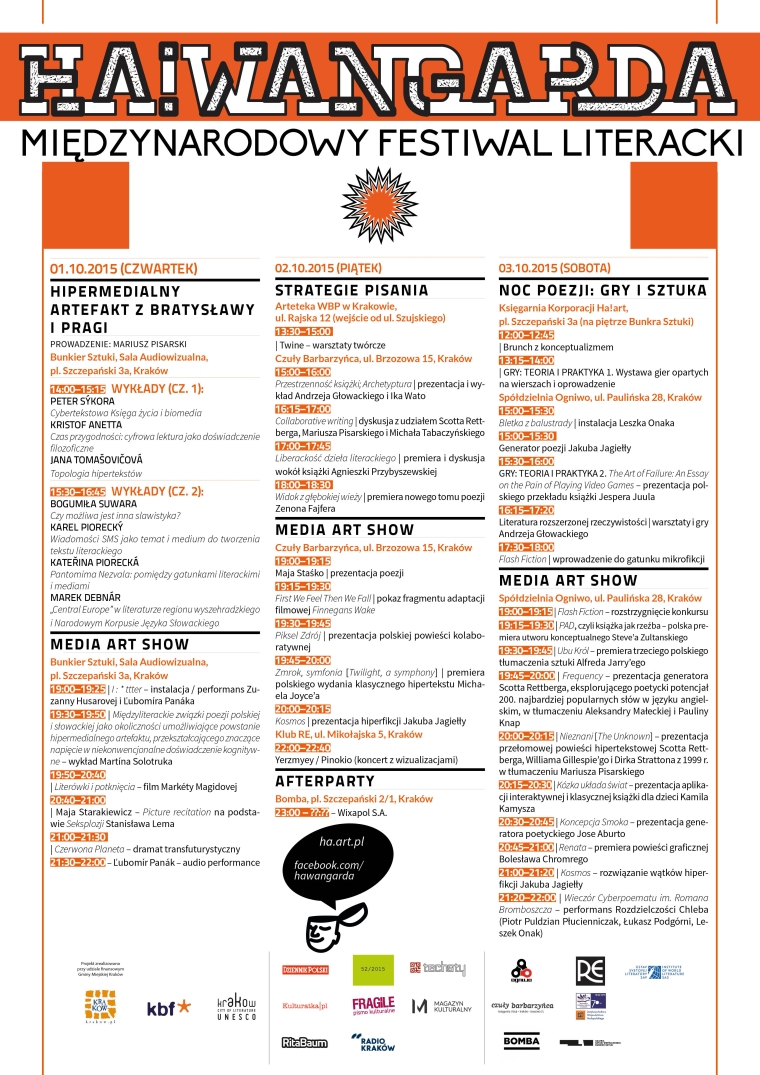
• • •
ORGANIZATORZY: Grant „Hipermedialny artefakt” pod kier. dr Bogumiły Suwary, VEGA č.p.: 2/0107/14, program: VEGA (http://usvl.sav.sk/wp/?page_id=31)
• • •
Projekt zrealizowano przy udziale finansowym Gminy Miejskiej Kraków
• • •
Partnerzy:
Bunkier Sztuki
• • •
Patroni medialni:



